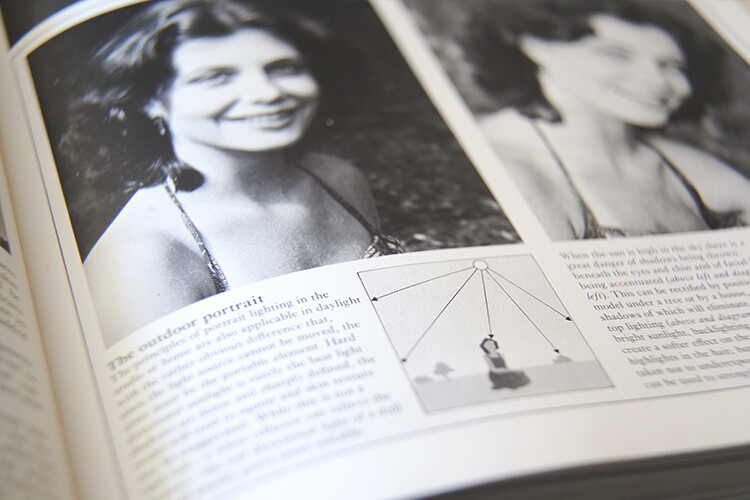Winners and finalists of Smithsonian Magazine’s 17th Annual Photo Contest
 |
Smithsonian Magazine recently announced the winners and finalists of their 17th Annual Photo Contest. Over 36,000 images were submitted by more than 10,000 photographers from 145 countries. A judging panel consisting of the magazine’s photo editors selected 60 images across 6 categories: Natural World, The American Experience, Travel, People, Altered Images, and Mobile.
London-based photographer Jon Enoch’s ‘Hanoi Fish Man,’ captured in Vietnam’s capital city, depicting a biker lugging around massive loads of live fish contained in plastic bags, is the Grand Prize winner. If this image looks familiar, it was shortlisted earlier this year by Sony’s annual World Photography Awards.
All 60 finalist images can be viewed here. Smithsonian Magazine is currently accepting entries for their 18th Annual Photo Contest. For more inspiration, you can follow along on Instagram, Facebook, and Twitter.
Reader’s Choice, American Experience: ‘Home Survives Direct Hit From Tornado’ by Matt Gillespie (United States)
 |
Photo Location: Ellerslie, Georgia, United States
Artist Statement: This home was in the direct line of a tornado that hit Ellerslie, Georgia. Most of the trees on the property had fallen, but the house stood with minimal damage.
Winner, Natural World: ‘Adélie Penguin on an Iceberg’ by Conor Ryan (United Kingdom)
 |
Photo Location: Antarctica
Artist Statement: Ice-dependent animals are in perilous danger of losing their habitat. This photo shows an Adélie penguin standing on an iceberg off Devil Island, Antarctica. I like how the half-lit, sea-eroded iceberg gives the scene a sense of dichotomy. Perhaps the penguin’s indecision on which way to go, or perhaps ours.
Finalist, Natural World: ‘Tender Eyes’ by Tamara Maria Blazquez Haik (Mexico)
 |
Photo Location: Monfragüe National Park, Spain
Artist Statement: A gorgeous griffon vulture is seen soaring the skies in Monfragüe National Park in Spain. How can anyone say vultures bring bad omens while looking at such tenderness in this griffon vulture’s eyes? Vultures are important members of the environment, as they take care of recycling dead matter. When looking at them flying, we should feel humbled and admire them.
Winner, The American Experience: ‘Shields Strikes Back’ by Terrell Groggins (United States)
 |
Photo Location: Detroit, Michigan, United States
Artist Statement: Olympic champion Claressa Shields (right) meets Hanna Gabriels in a boxing match at the Masonic Temple in Detroit, Michigan on June 22, 2018. Shields suffered a first-round knock-down by Gabriels—the first time that had happened in Shields’ career—but went on to win the match by unanimous decision. Shields is the first American woman to win an Olympic gold medal in boxing, and the first (male or female) to win a gold back-to-back in successive Olympic Games.
Finalist, The American Experience: ‘Playground Landscape’ by Juan Osorio (United States)
 |
Photo Location: Verona, New Jersey, United States
Artist Statement: This series documents the interaction of the shapes, colors and functionality of playgrounds and the people who use them with an emphasis in the color contrast between the outfits and the environment.
Winner, Travel: ‘Iceberg Tower’ by Natnattcha Chaturapitamorn (Thailand)
 |
Photo Location: Ilulissat, Greenland
Artist Statement: Sunset over an iceberg tower in Disko Bay.
Finalist, Travel: ‘Blooming’ by Thien Nguyen (Vietnam)
 |
Photo Location: Phu Yen, Vietnam
Artist Statement: A fishing net moving underneath the water’s surface. Many local fisherman families along the coastline of Phú Yên province in Vietnam will follow the near-shore currents to catch the anchovy during peak season.
Only a small proportion of the entire catch is sold fresh, with most of it being dried or salted. Salted anchovy is the most important raw material to create traditional fish sauce; the humble anchovy becomes the spirit of Vietnamese cuisine.
Finalist, Travel: ‘Larung Gar Buddhist Academy’ by Attila Balogh (Hungary)
 |
Photo Location: China
Artist Statement: The world’s biggest Tibetan Buddhist institute.
Winner, People: ‘Dungan Wedding’ by Yam G-Jun (Malaysia)
 |
Photo Location: Bishkek, Kyrgyzstan
Artist Statement: Madina, 20, an ethnic Dungan, is covered by a red veil before she leaves for the groom’s house during wedding ceremony in Milyanfan, Kyrgyzstan. Dungans wear traditional Chinese-influenced wedding gowns, follow traditional Hui Chinese wedding ceremonies from the 19th century and practice endogamy, but due to shrinking population size, they have stopped the practice and allowed Dungans to marry other ethnicities.
Finalist, People: ‘Portrait of Endurance Athlete Anders Hofman’ by Jesper Gronnemark (Denmark)
 |
Photo Location: Copenhagen, Denmark
Artist Statement: Portrait of endurance athlete Anders Hofman before his attempt to complete a triathlon at Antarctica.
Finalist, People: ‘The Young Dreamers’ by Sujan Sarkar (India)
 |
Photo Location: India
Artist Statement: Childhood, youth, old age. Among the three, the childhood is the most beautiful part of our life…It must be enjoyed to the fullest.
Finalist, Altered Images: ‘Follow the Herd’ by Tuan Nguyen Tan (Vietnam)
 |
Photo Location: Vietnam
Artist Statement: The buffalo follow each other to new food sources at Dau Tieng Lake, Vietnam.
Winner, Mobile: ‘At Sunset’ by Victoria Gorelchenko (Russia)
 |
Photo Location: Moscow, Russia
Artist Statement: I was waiting for my husband in the parking lot and noticed this beautiful light.
Finalist, Mobile: ‘Loneliness in Capital’ by Farnaz Damnabi (Iran)
 |
Photo Location: Tehran, Iran
Artist Statement: When I was going back home from work, this scene—women taking naps on public transportation— attracted my attention.
Articles: Digital Photography Review (dpreview.com)




















You must be logged in to post a comment.